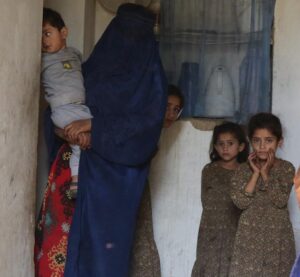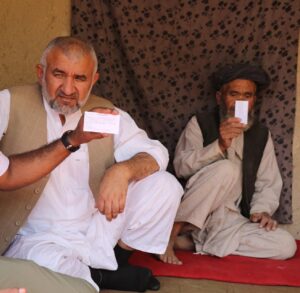Address:
- Street # 5 of Syloo, House # 152-153, District 3, Kabul, Afghanistan
- info.afg@dca-af.org
- Sun - Thu: 8.00 AM to 4.00 PM
Danielle Huot (2017[1]) studies on ‘rural surplus’ that shows over 65.5% of rural Afghans do not have land, livestock, or any other assets. These groups of people live based on a patron-client social institutions where they cultivate the land or shepherd the herds of the better-off. However, what happens when these ‘rural surplus’ become old and cannot do the farm work or if they become disabled or widowed? Other reports revealed they become displaced and go closer to the towns looking for humanitarian provision. More than a third of the 6.6 million displaced people in Afghanistan went through the catastrophes to become ‘rural surplus’ inquiring humanitarian assistance.
Mr. Naim Nazir, Ms. Humeira Mohammad Sharif and Mr. Abdul Wali in Fayzabad District of Badakhshan Province are examples of the ‘rural surplus’ that went through the upheavals. Mr. Naim is disabled, Mr. Abdul is too old, and Ms. Humeira lost her husband due to cancer. Mr. Naim Nazir and Mr. Abdul Wali are displaced from Yaftal to Faizabad District of Badakhshan Province which is 37km away. The project (cash assistance to IPC phase 3 and 4 vulnerable people in Darayem, Fayzabad and Jurm Districts of Badakhshan) funded by AHF (OCHA) and implemented by Dutch Committee for Afghanistan (DCA) is supporting 8,365 ‘rural surplus’ that need some aid.

Danielle Huot (2017) Afghanistan surplus rural population, Secure Livelihoods Research Consortium
Figure 1 Ms. Humeira with her 4 children, Dashti Shuhada village, Fayzabad District, Badakhshan
“I am the breadwinner of 4 young kids – 3 girls and a boy. “It’s hard to thrive in a patriarchal society with a huge gender pressure in Afghanistan,” says Ms. Humeira who lost her husband a year ago due to cancer. All the three respondents highlighted that the selection of beneficiaries took place by the participants selection committee (PSC). Although there are so many destitute households in the villages, “they selected the right people with disability, widows, older people and those that own more young kids”. This was corroborated by the DCA staff through a comprehensive assessment.
The distributed cash was streamlined to offer a maximum degree of choice and dignity for the beneficiaries. According to the respondents, majority of the money was used to buy food items. This is also confirmed by a post-distribution monitoring (PDM) that reflects 96% of the households used the cash for food. The remaining balance was used to pay debts, buy firewood for winter, and soap. Mr. Abdul Wali, who is over 70 years old and the sole supporter of 6 grandchildren who lost their dad due to the war confirmed this. “I paid AFN5,000 for food debt, AFN3,000 for purchasing additional food and the remaining 4,000 for procuring firewood for winter.”

Figure 2 Mr. Abdul Wali showing the card of complaint response mechanism (CRM) in Daray Najuha village of Fayzabad District, Badakhshan
A recent PDM established 57% of the beneficiaries travel less than 1 hour to access the market and buy food items. This is substantiated by the three households interviewed – it took them 10 to 30 minutes to buy the food items.
“We were given a card to report complaints” confirmed by all the three beneficiaries. “If there is any mismanagement or complain, we are fully informed to report through that process.”
Of the total of 8,365 individuals supported by this project, 23% are under 5 years old, 41% youth, 17% male and 20% female beneficiaries. Furthermore, over 32% of the households reported to have a disabled family member. With the upcoming winter, the situation will only get worse, and the respondents appreciate for the cash support to continue.

Leave A Comment